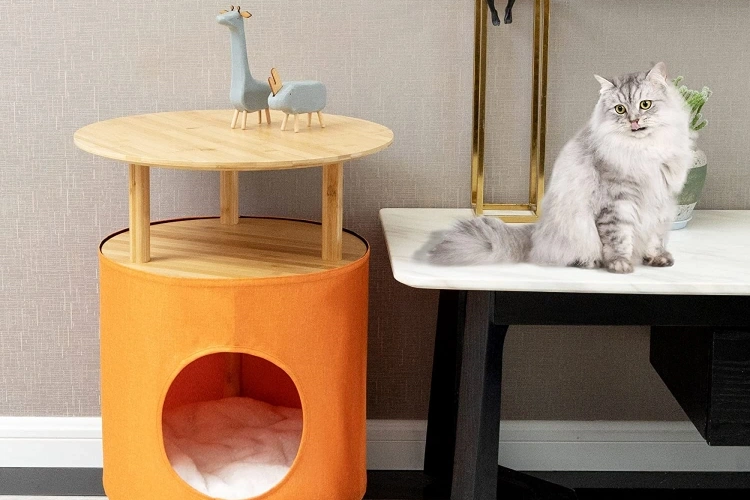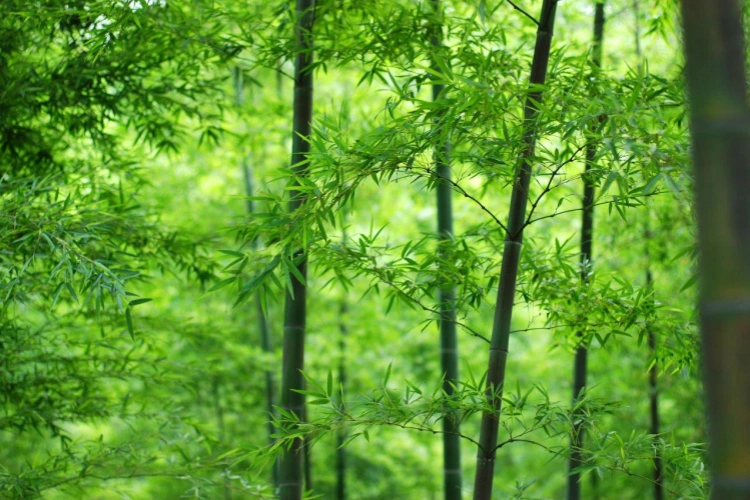Introduction to Bamboo: The Eco-Friendly Alternative
Bamboo, increasingly recognized as a sustainable resource, offers a multitude of benefits that position it as an eco-friendly alternative to traditional materials. One of bamboo’s most significant advantages is its rapid growth rate. Unlike conventional trees, which can take decades to mature, certain species of bamboo can reach full height within three to five years. This swift growth cycle allows for more frequent harvests without depleting the supply, ensuring that the resource remains sustainable over time.
Furthermore, bamboo thrives with minimal agricultural inputs, requiring little to no pesticides or fertilizers for its cultivation. This characteristic not only reduces the chemical footprint associated with its growth but also conserves soil quality and biodiversity in the areas where it is farmed. These ecological benefits are further compounded by bamboo’s ability to sequester carbon dioxide more efficiently than many types of trees, helping to mitigate climate change by capturing and storing carbon in its dense root system and stalks.
The environmental impact of deforestation is a pressing global issue, contributing to the loss of habitats, reduced biodiversity, and increased global warming. Traditional logging practices often involve clear-cutting forests, which devastates ecosystems. Bamboo presents a viable alternative, offering comparable strength and versatility to hardwoods while relieving pressure on forested areas. Its ability to grow in a variety of climates and conditions also means it can be cultivated in regions that are not suitable for traditional timber forests, further diversifying and decentralizing the supply chain.
These sustainable qualities have led to the rising popularity of bamboo products. From household items and flooring materials to clothing and utensils, bamboo’s versatility ensures it meets the demands of conscientious consumers looking to reduce their environmental footprint. As awareness of bamboo’s benefits grows, so too does its role in fostering a more sustainable, greener future for homes and communities worldwide.
Bamboo in the Home: Versatile and Stylish
Bamboo has increasingly become a popular choice for homeowners seeking sustainable yet stylish décor options. This versatile material can be seamlessly incorporated into various facets of home design, enhancing aesthetics while also promoting environmental responsibility. One of the most appealing aspects of bamboo is its adaptability, making it ideal for an array of applications, from furniture and flooring to kitchenware and textiles.
One of the most common uses of bamboo in home décor is in furniture. Bamboo furniture offers a sleek, modern appearance that can fit into contemporary homes seamlessly. Its natural hues, often ranging from light beige to honey brown, provide a warm, inviting feel. For those aiming for a more rustic or bohemian aesthetic, bamboo’s raw texture can add an organic touch to the living space. Beyond just chairs and tables, bamboo is also fashioned into shelving, bed frames, and even cabinetry, proving its versatility across different design elements.
The flooring realm has also embraced bamboo significantly. Known for its durability, bamboo flooring presents a sustainable alternative to traditional hardwood floors. It is resilient against wear and tear, making it an ideal choice for high-traffic areas. Additionally, bamboo flooring is relatively easy to maintain, requiring only regular sweeping and occasional mopping to preserve its pristine appearance. The cost-effectiveness of bamboo as a flooring option cannot be overlooked, as it often provides a more affordable solution compared to other hardwoods.
In the kitchen, bamboo finds its place in the form of cutting boards, utensils, and even countertops. Bamboo kitchenware is not only stylish but also functional, being lightweight and water-resistant. Its natural antibacterial properties further enhance its appeal, ensuring a hygienic environment for food preparation. For those conscious of their kitchen’s visual impact, bamboo’s subtle grain patterns and natural finish bring a touch of elegance to everyday utensils.
Textiles are another area where bamboo’s versatility shines. Bamboo fibers are transformed into soft, breathable fabrics, perfect for bed linens, towels, and clothing. These textiles offer exceptional comfort and are naturally hypoallergenic, making them suitable for individuals with sensitive skin. Moreover, bamboo fabrics are biodegradable, reaffirming their status as a sustainable choice.
Beyond the aesthetics and versatility, practical considerations such as durability, cost, and maintenance are vital. Bamboo’s intrinsic strength makes it long-lasting, while its rapid growth cycle ensures it remains a cost-effective material. Maintenance is generally simple, aligning well with today’s busy lifestyles. With its myriad benefits, bamboo stands out as a sophisticated, eco-friendly choice for enhancing the modern home.
Health Benefits of Using Bamboo Products
Opting for bamboo products in your home not only supports sustainable living but also offers a multitude of health benefits. One of the most notable advantages of bamboo is its natural antibacterial properties. Studies have shown that bamboo fibers contain a unique agent known as “bamboo kun,” which significantly reduces the growth of bacteria. This attribute makes bamboo an ideal material for everyday items like towels, bed linens, and cutting boards, as they remain fresher and more hygienic for longer periods.
Bamboo also boasts hypoallergenic qualities. Unlike many synthetic materials, bamboo fibers do not irritate the skin, making them a suitable choice for individuals with allergies or sensitive skin. Consequently, bamboo products such as bedsheets and clothing can provide a more comfortable and itch-free experience. The softness of bamboo fabric, often compared to that of silk, further enhances its appeal for those seeking a hypoallergenic and luxurious alternative.
Another significant health benefit of using bamboo products is their lack of toxic emissions. Many conventional materials, particularly synthetic ones, release volatile organic compounds (VOCs) into the air, which can contribute to indoor air pollution and respiratory issues. Bamboo, on the other hand, is free from harmful chemicals and pesticides, ensuring that the air quality in your home remains safe and clean. This aspect is particularly crucial in items like cutting boards and kitchen utensils, where direct contact with food is involved.
Scientific studies support these claims, adding credibility to the benefits of bamboo. Research has shown that bamboo’s unique characteristics, including its antibacterial and hypoallergenic properties, are not merely anecdotal but are backed by scientific evidence. By incorporating bamboo products into your living environment, you are not only promoting sustainability but also prioritizing your health and well-being.
Making the Switch: Tips for Transitioning to Bamboo
Incorporating bamboo products into your home is a step towards sustainability that doesn’t compromise on style or functionality. To begin this transition, the first step is identifying quality bamboo items. Genuine bamboo products should highlight the material’s natural attributes and be free from materials like plastic or synthetic fibers. Look for certifications such as the Forest Stewardship Council (FSC) label, which ensures that the bamboo is harvested in an eco-friendly manner.
Reputable brands play a crucial role in the quality of bamboo products available in the market. Brands like Bambeco, EcoBamboo, and Bambu Home have established themselves as leaders in providing sustainably sourced bamboo items ranging from kitchenware to furniture. When searching for these products, reading customer reviews and verifying brand certifications can help in finding high-quality, durable items.
Transitioning to bamboo doesn’t have to be an all-or-nothing endeavor. Gradually phasing out less sustainable options by replacing them with bamboo counterparts can make the process manageable and budget-friendly. Everyday items such as toothbrushes, cutting boards, and utensils are excellent starting points. For larger investments, consider bamboo flooring or furniture pieces, which are available at various price points to accommodate different budgets.
For those who enjoy a hands-on approach, DIY bamboo projects offer an engaging way to introduce bamboo into your home. Simple DIY bamboo crafts, such as plant holders, shelves, or even decorative pieces, can add aesthetic appeal while promoting sustainability. Numerous online resources and tutorials can guide you through these projects, making it easier to personalize your spaces with bamboo.
Maintaining bamboo products ensures their longevity and continued eco-friendliness. Regular cleaning with mild soap and water, avoiding prolonged moisture exposure, and applying natural oils can help keep bamboo items in excellent condition. Additionally, following manufacturer care instructions preserves the integrity and durability of bamboo products, ensuring they remain a staple in your green home for years to come.






